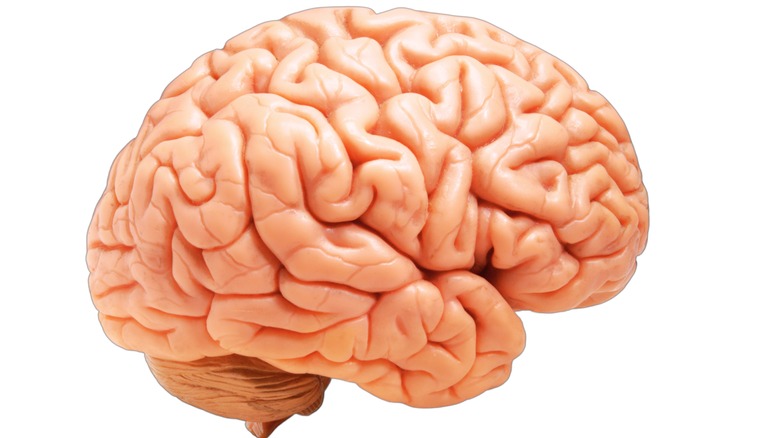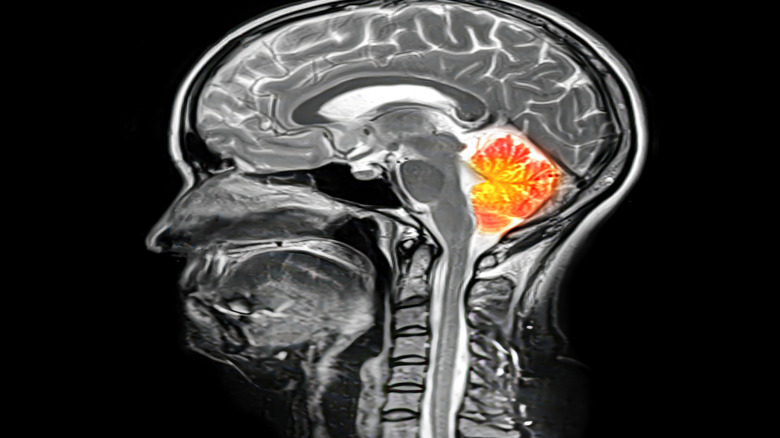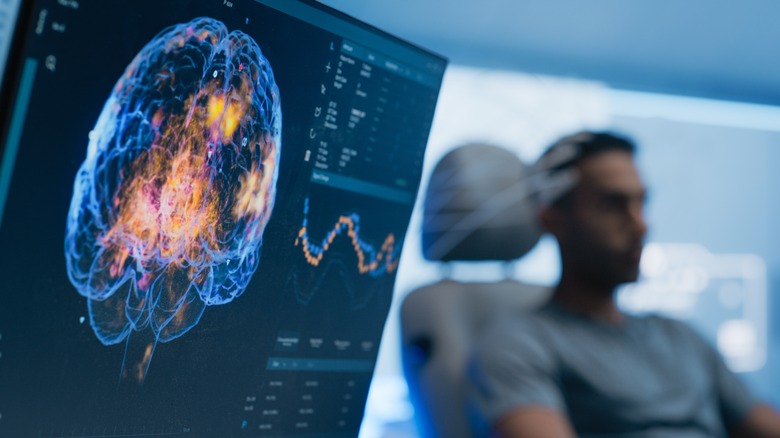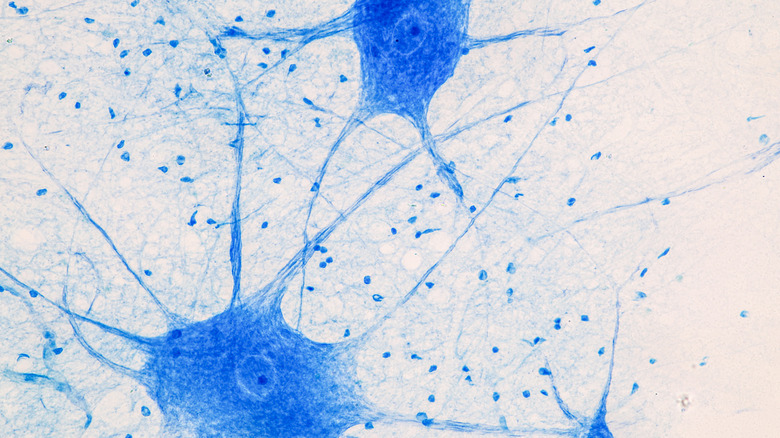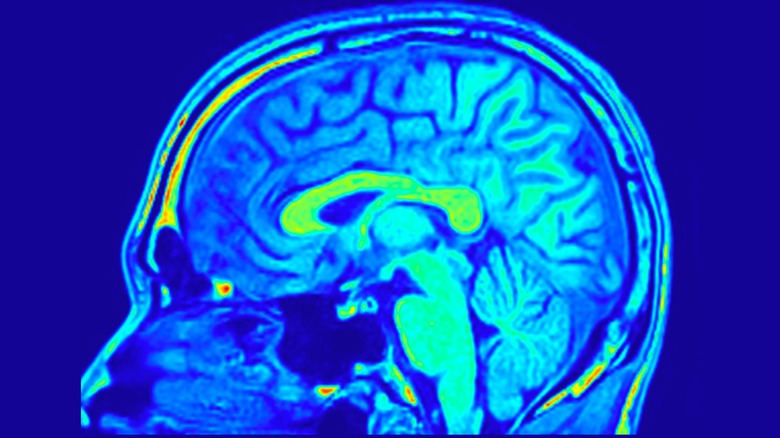9 Ways The Anatomy Of The Brain Might Surprise You
The human brain is by some margin the most complex of all animals, giving us the ability to think, reason, and communicate in a way that is superior to all other species. In spite of its amazing power, it is an organ that many of us may never ponder, and as individuals, we probably have no real idea just what it is capable of.
Over the last few centuries, knowledge of the anatomy of the brain has changed drastically. In the 1600s, the major sections of the brain were named by anatomists, including cerebrum, cerebellum, and medulla. In the centuries that followed, each new generation of scientists revealed something new about the brain, with technology such as the microscope and eventually modern brain scanning allowing for greater advancements to be made.
In spite of our in-depth understanding of brain anatomy, there are still many secrets to be uncovered about our most vital organ, and recent research has thrown up some unexpected information. From the effect of aging on neuron production to the comparison of our brains with other primates, there are many facts about the brain that are not widely known. Let's take a look at nine ways the anatomy of the brain might surprise you.
Besides water, the brain is made mostly of fat
The brain is composed of more than 80% water, which is why keeping well hydrated is crucial to thinking clearly and operating at full speed. Other than the water, however, the actual matter of the brain is mostly made of something that may surprise you — fat. 60% of brain matter is fat, and it is a crucial component of how it functions.
Around the nerve fibers in the brain is a coating of fat known as myelin, which has a crucial protective part to play in keeping the brain functioning properly. In the same way that a plastic cover protects electrical wire, the myelin sheath insulates the nerve cells and encourages the speedy transfer of information across the brain. Cholesterol may seem like a health villain to many, but these valuable myelin coatings are full of it, and consuming it as part of a healthy diet is imperative to keeping the brain in optimal health. That said, it's important to note that conditions such as multiple sclerosis cause the body to attack the myelin sheath, creating gaps in the protection of the nerve fibers.
Contrary to how we have been taught in recent decades to villainize all fat, the right types of fat are absolutely imperative for good brain health, and incorporating them into your diet will make a difference. So grab a handful of walnuts and drizzle some olive oil over your next salad to keep your brain happy and healthy.
The brain can't feel pain
It may seem unlikely but your brain, the organ which interprets everything you touch and processes pain, doesn't actually feel any pain itself. This is because the brain doesn't contain any nociceptors, which are the neurons that respond to pain, temperature, and pressure. Thankfully the skull does a pretty good job of protecting the brain from harm, which could be the reason that it doesn't need pain receptors in the first place.
The amazing result of this is that when brain surgery is carried out, the patient is often awake for the majority of the operation. This is incredibly useful, as it allows the surgeon to observe what is happening to the brain through mapping technology, and can reduce the chances of serious complications that could affect speech and mobility.
Although the brain matter itself cannot feel pain, the rest of the head and skull do contain nociceptors, which is why we can feel pain in our head. The layers of tissue that protect the brain can feel pain, and pressure can also cause headaches. But ultimately, the very organ that detects the pain throughout our bodies doesn't experience any itself.
The cerebellum is crucial for long-term memory
The cerebellum, meaning "little brain," is known to be the part of your brain responsible for movement and motor skills. However, recent research has shown that it is not only in charge of the motor function you carry out in the present tense, but also for the long-term memory of those motor skills.
For a long time, scientists have understood that damage to the cerebellum can cause issues with balance, muscle coordination, and vision, but the most recent research found that patients were able to learn new motor skills when they were able to practice them shortly afterward. The more time that passed between practicing the skill, the more likely it was that it would be forgotten. This suggests that a key function of the cerebellum is taking short-term learning and turning it into a long-lasting skill. It should be noted, though, that the term "long-lasting" used in this study doesn't refer to months or years: The difference between a 10-second interval and a 60-second interval was enough to see a dramatic change in the participants who had cerebellum damage, showing how critical this tiny part of the brain is to committing a fleeting moment to a more permanent feature.
The human brain has much more interconnection than other primates
Comparing the human brain to that of other animals, particularly primates, has been a crucial way for scientists to investigate what gives us the cognitive advantage. Previously, the size of the brain was thought to be a crucial factor, even when it comes to the differences between humans and chimpanzees, but this explanation doesn't always fit, since the brain of an elephant has triple the number of neurons as our brains do.
Recent research, however, suggests that the way in which the brain is internally connected could be a more significant factor in our ability to think and communicate. Surprisingly, though scientists expected that the prefrontal cortex would be the most notably dissimilar, the research showed that the biggest differences were found in the temporal lobe rather than the prefrontal cortex as expected. Of particular note was the difference in the size of the arcuate fasciculus, which connects the temporal lobe to the frontal lobe, which was found to be much larger and more complex than in other primates.
The temporoparietal junction at the rear of the cortex was also found to have more connections to other areas of the brain, proving that we are better wired for navigating social situations. Together, these findings show that the human brain is not just larger than other primates, but is also better connected in ways that increase language development and communication.
The brain can't actually multi task
In our busy modern world, we often talk about multitasking, and the widely-quoted belief that women are better than men at this particular skill has been confirmed in a 2013 study. However, the phrase is a bit of a misnomer, at least in terms of the brain, since it is only capable of focusing on one task at a time.
The prefrontal cortex is the front section of your brain, responsible for emotions, problem solving, and decision making, and it is not fully formed until our early 20s. If you attempt to multi-task, the prefrontal cortex needs to switch from one task to another as quickly as possible, since it is impossible for it to truly multi-task and do two separate things at the same time. While you may assume that multi-tasking is more efficient, in terms of brain anatomy, the opposite is true. Every time you switch tasks, the parietal lobe at the rear of the brain needs to filter out the irrelevant information from the previous task and select the correct information for the new one. If you do this repeatedly, it can significantly delay the concentration process, which can only happen once the brain is fully focused on the task in hand.
In spite of many of us believing that multi-tasking is the way forward, only 2.5% of people who took part in a 2010 study were truly capable of multi-tasking efficiently. Instead, the more effective strategy is focusing on tasks consecutively, which allows the brain to engage fully in that task without distraction, before moving on to the next.
New brain cells continue to form as we age
The human body is a master of regeneration, replacing old cells every day with new ones. It is thought that around 330 billion new cells are created every single day, though this is still only 1% of the total number of cells in our body. Some cells, such as skin cells and those in the gut, are replaced very regularly, while others last for months or years, including those in the brain.
Neurogenesis is the process of the brain producing new brain cells, and until recently it was thought that after a surge during childhood, this process stopped. However, new research has confirmed that new neurons continue to develop into adulthood and toward old age, and perhaps surprisingly, continues in patients with Alzheimer's too, though at a slower rate.
Exercise has been found to be crucial to the process of neurogenesis in animal studies, suggesting that it could be a simple way for humans to maintain their cognitive levels as we age too. Dr. Rudolph Tanzi, a neuroscientist and co-director of the McCance Center for Brain Health at Harvard-affiliated Massachusetts General Hospital said, "Right now, there is no substitute for regular exercise to help with neurogenesis," adding, "If it works the body, it's great for the brain" (via Harvard Health Publishing). Even though further studies are needed, this research gives a clear suggestion that having a healthy approach to life and exercising regularly can increase the chances of high cognitive function later in life.
The average brain has over 100 trillion connections
The average human brain has more than 86 billion neurons, most of which we are born with. However, the impressively large numbers don't end there, as each of these neurons can form connections with thousands of others, to form over 100 trillion connections, a class of structures known as synapses.
This area of neuroscience is incredibly recent, and it's creating a new understanding of how these crucial parts of our brain work together. Known as connectomics, it aims to use the latest mapping methods to explore how individual neurons interact with each other, something which understandably takes a long time. At Harvard, however, researchers have invented a much faster method for mapping the neurons of the human brain, which, according to an associate professor of neurology at Harvard Medical School, can "capture the whole nervous system of an adult fruit fly in a few months." Though the science of connectomics is still in the very early stages, the progress made in recent years means we could potentially deepen our understanding of neural connections considerably in the coming decades.
Most neurons last a lifetime
Neurons are the nerve cells found throughout the body that transmit information from one place to another. There are around 100 billion neurons in our body, and unlike many of the cells in the rest of the body, they can last the entire time that we are alive.
Most neurons are created before we even take our first breath, as the process begins in the second month of pregnancy and continues until birth. Almost all of the neurons you need for your entire life are present when you are born, with a small number being created in early childhood. At death, the neurons will then die too, but the most recent research suggests that neurons are capable of surviving and functioning much longer than the average lifespan of the body housing them.
Lorenzo Magrassi is a neurosurgeon at the University of Pavia, and his research involving the neurons of mice and rats has convinced him that the longevity of neurons is restricted only by the lifespan of the animal in question. "Neurons do not have a fixed lifespan," he said. "They may survive forever. It's the body that contains them that dies" (via National Geographic). While the research into neurons still has much to reveal, the idea that neurons do not necessarily have to die as a result of old age could be critical in future treatments from cognitive disorders.
We use all of our brain
You may have been led to believe that humans only use 10% of the brain, and there have been movies released in recent decades based on that notion, but it is simply not true. In fact, experts believe that we all use the entirety of our brain every single day, even when we are asleep.
One possible reason for this myth is that there have been widely documented cases where people survived without parts of their brain but still were able to have full cognitive function, leading to the assumption that the small, working section of the brain was unharmed. However, the brain is so clever that it can rewire and redistribute connections to overcome injury in one particular area.
While we do use the majority of our brain throughout the day, different parts of the brain are responsible for individual tasks. The cerebral cortex at the front of the brain is responsible for movement, speech, and reasoning, and it has two sides, which each control the opposite side of the body. The brainstem in the middle is in charge of a range of functions, including hearing, breathing, and blood flow, and contains the medulla, which controls many of the vital functions that keep us alive. And the cerebellum at the back controls speech, balance, and posture. In reality, the majority of your brain is working hard for most of the day to keep you functioning, so if you had plans to uncover superhuman powers by engaging more of your brain, you may be disappointed.
